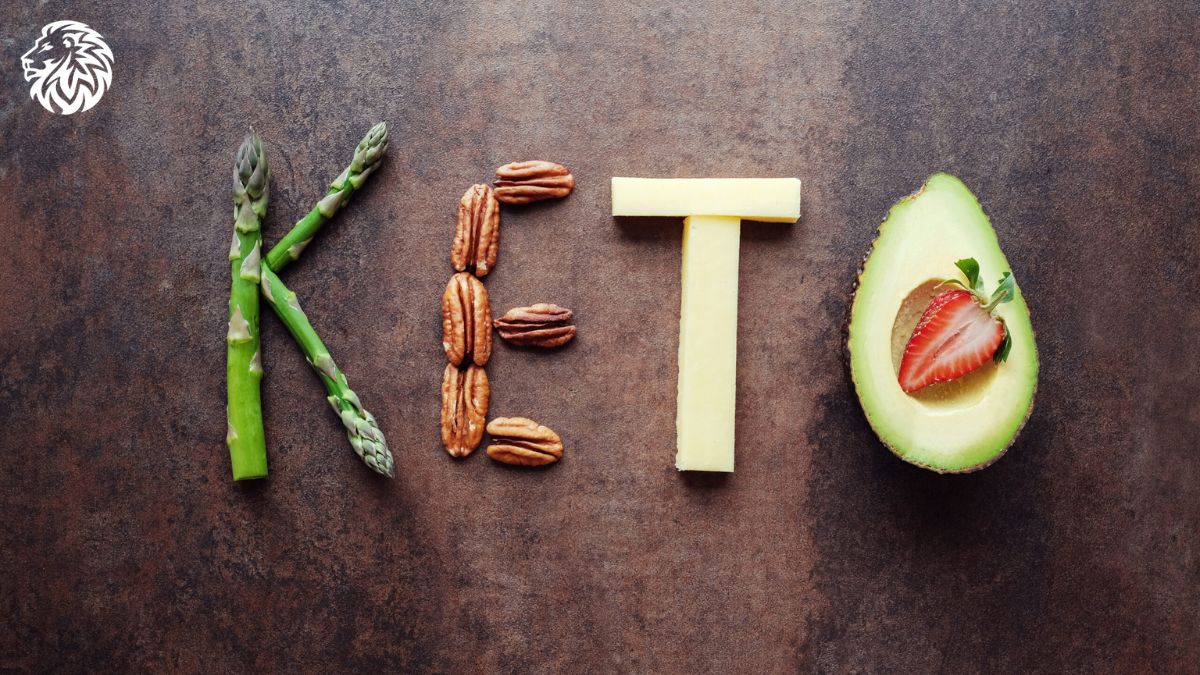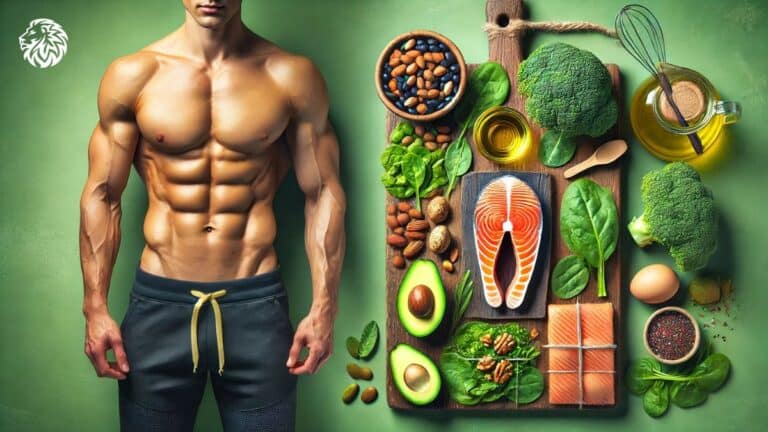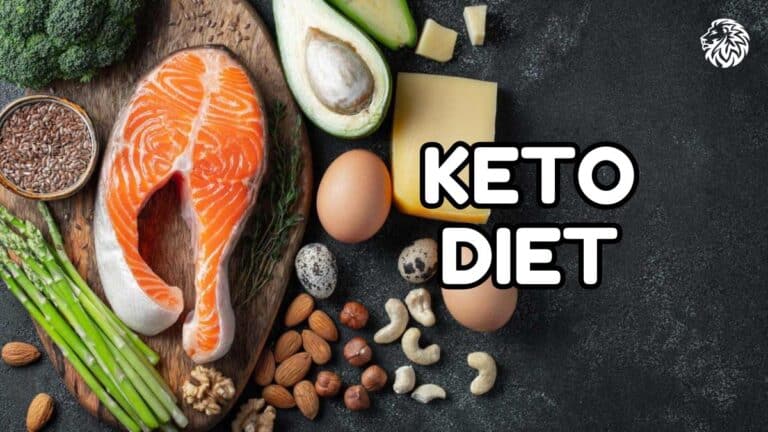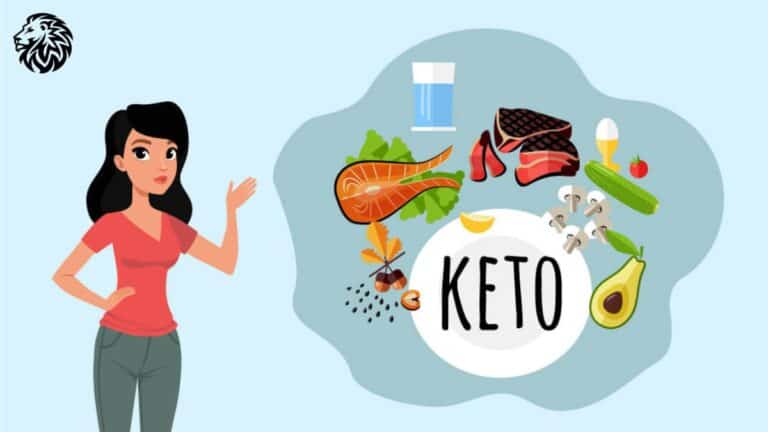So, have you heard about this keto diet that’s been all the rage lately? In simple terms, it’s all about enjoying more fats, a good amount of protein, and cutting back on those carbs. Why, you ask? Well, when you cut down on carbs, your body starts burning fat for energy instead of its usual go-to: sugar from carbs. This fat-burning mode? It’s called ketosis.
Staying in this ketosis zone is kinda like the golden ticket if you’re giving the keto diet a whirl. And it’s not just about munching on keto-approved snacks. It’s super important to know which foods might kick you out of this fat-burning zone. Think of it like a game: the better you know the rules, the better you play. So when diving into keto, being clued in on which foods to dodge is half the battle won!
The Science Behind Keto
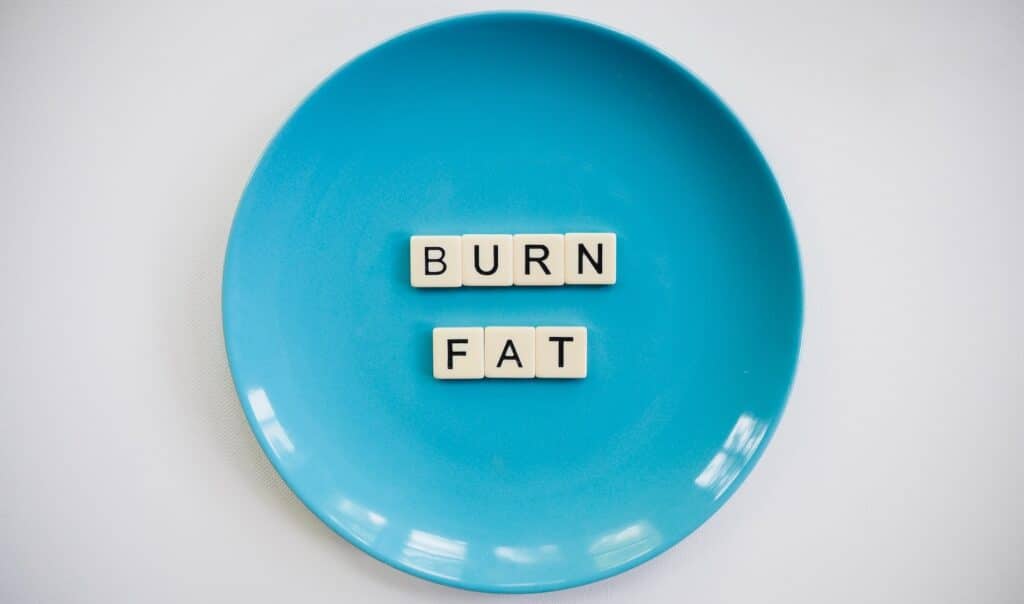
You’ve probably heard about the keto diet, right? It’s not just a fad; there’s some real science backing it up. Let’s dive in and get the lowdown.
Explanation of Ketosis and How it Works
Usually, our bodies are like cars that run on petrol, with the petrol being glucose we get from foods like bread, fruits, and sweets. When we eat, our body breaks down these foods, sends sugar into our blood, and our body’s ‘engine’ (the cells) uses it up for energy with a little help from a hormone called insulin.
Now, imagine if our car suddenly had to run on diesel instead of petrol. That’s what happens with keto! When we cut back big-time on carbs, our body goes, “Hey, I need another type of fuel!” And it turns to fat.
In the process, our liver starts breaking down this fat and makes something called ketones. These ketones are like the diesel fuel for our body. When there’s a specific amount of these ketones in our blood, that’s when we’re in this cool state called ketosis.
The Significance of Carbs in the Keto Diet
Here’s the tricky bit about the keto diet: carbs. Because our body loves using carbs for energy, even a bit too many carbs can stop us from getting into that ketosis zone. On keto, most folks aim to eat between 20 to 50 grams of carbs a day. But wait, not all carbs are the same!
Think of fiber (found in veggies and whole foods) as the good guy in the carb world. Our body can’t really digest it, so it doesn’t mess with our sugar levels or that ketosis state. That’s why, on keto, you often hear people talking about “net carbs” – it’s just the total carbs minus the fiber.
So, if you’re thinking of hopping on the keto train, remember it’s all about the carbs! It’s a bit like a balancing act – ensuring you’re eating just the right amount to get into that fat-burning zone. And always remember to listen to your body and find what feels right for you!
High-Carbohydrate Foods to Avoid
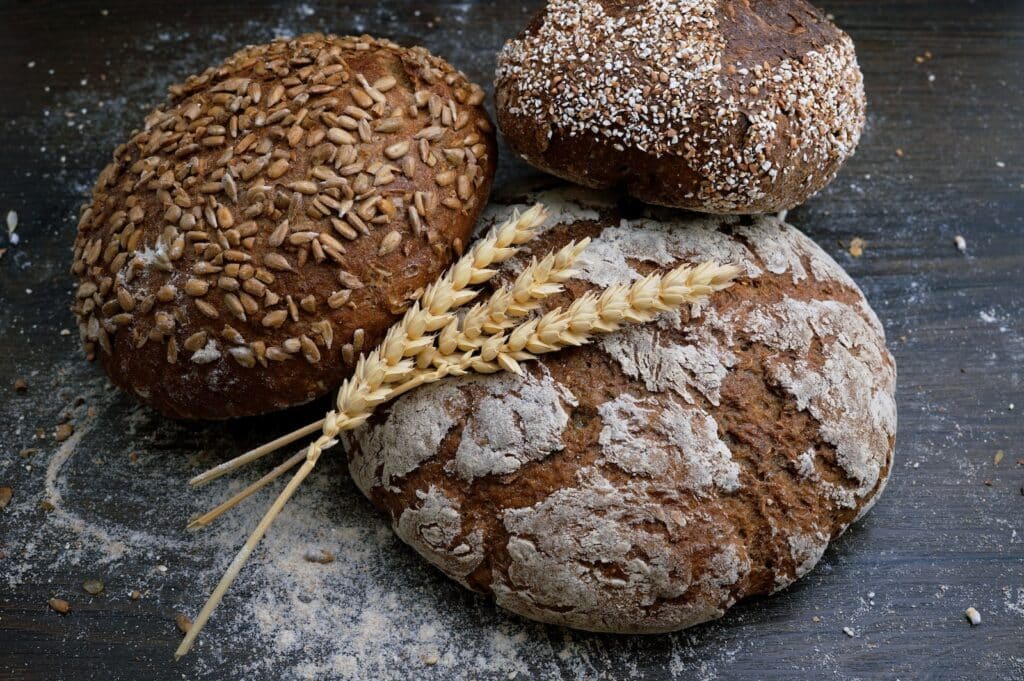
For individuals committed to the keto diet, understanding which foods can potentially disrupt ketosis is crucial. High-carbohydrate foods are typically the main culprits. Here’s a closer look at some of the most common high-carb foods that keto dieters should be wary of:
Grains
- Rice: A staple in many cultures, rice is a primary source of carbs. For instance, a single cup of cooked white rice can contain approximately 45 grams of carbs, making it a non-starter for those on a strict keto regimen.
- Wheat: Products made from wheat, including bread, pasta, and pastries, are dense in carbohydrates. Whole wheat may offer more fiber, but it’s still high in carbs and generally not suitable for keto.
- Corn: Often thought of as a vegetable, corn is a grain and can be high in carbohydrates, especially when consumed in the form of cornmeal, cornflakes, or popcorn.
- Oats: While oats are hailed for their fiber content and health benefits, they are relatively high in carbs, making them incompatible with a standard keto diet.
Starchy Vegetables
- Potatoes: Both white and sweet potatoes are rich in carbohydrates. A medium-sized potato can contain more than 20 grams of carbs, which can quickly use up a day’s carb allowance on a keto diet.
- Sweet Potatoes: Although they offer a host of nutrients, including beta-carotene, sweet potatoes are just as carb-rich as their white counterparts.
- Peas: Green peas, while nutritious, contain a higher carb content compared to other green vegetables. A single cup can have about 25 grams of carbohydrates.
Other starchy vegetables to be cautious of include yams, parsnips, and butternut squash.
Fruits
While fruits are undeniably nutritious, they are nature’s candy and can be rich in sugars. Some fruits, in particular, are especially high in carbs:
- Bananas: One medium banana can contain over 20 grams of carbs, most of which come from sugars.
- Pineapples: Delicious and tropical, pineapples are high in both carbs and natural sugars. A single cup of pineapple chunks can have around 22 grams of carbs.
- Oranges: Although they’re packed with vitamin C, oranges are also rich in sugars. One medium orange can have about 15 grams of carbs.
It’s essential to note that berries, such as strawberries, raspberries, and blackberries, tend to be lower in carbs compared to other fruits and can sometimes be enjoyed in moderation on the keto diet.
While these foods have their nutritional merits, they are high in carbohydrates, making them unsuitable for those strictly adhering to the keto diet. Making informed food choices is pivotal to maintain a state of ketosis and harness the full benefits of the ketogenic approach.
Sugar and Sweeteners

Navigating the world of sugars and sweeteners can be a complex task, especially when following the ketogenic diet. While sweetness enhances the flavor profile of many dishes, not all sweet substances align with the principles of keto. Here’s a guide to help differentiate and make informed choices.
Avoiding Added Sugars
- Candy: Most candies are a concentrated source of added sugars and should be avoided on the keto diet. They can significantly spike blood sugar levels and disrupt ketosis.
- Desserts: Traditional cakes, cookies, pastries, and ice creams are loaded with sugars. While some keto-friendly dessert alternatives exist, the conventional varieties are not suitable for a ketogenic lifestyle.
- Sweetened Beverages: Sodas, fruit juices, sweet teas, and many commercial coffee beverages contain high amounts of added sugars. Reading labels can provide clarity, but it’s often best to opt for water, unsweetened teas, or coffee.
Limiting Natural Sugars
- Honey: While honey is a natural sweetener, it is essentially liquid sugar. A single tablespoon can have more than 17 grams of carbs, making it unsuitable for keto in significant amounts.
- Maple Syrup: Similar to honey, maple syrup is dense in sugars. Even the pure, organic varieties are high in carbohydrates.
When considering natural sugars, it’s essential to remember that “natural” doesn’t always equate to “low-carb.” While these sweeteners might offer some health benefits over refined sugars, their carb content is still significant.
Artificial Sweeteners
While many artificial sweeteners have minimal to no calories or carbs, their impact on health and ketosis can vary:
- Allowed/Generally Safe for Keto:
- Stevia: A natural, plant-derived sweetener that doesn’t impact blood sugar.
- Erythritol: A sugar alcohol with minimal impact on blood sugar. It’s often blended with stevia.
- Monk Fruit: Another natural sweetener without carbs or calories.
- Xylitol: While it’s a sugar alcohol like erythritol, it has a slightly higher glycemic index but can still be keto-friendly in moderation. Note: It’s highly toxic to dogs.
- Be Cautious About:
- Aspartame: Found in many diet sodas and sugar-free products. Some people report sensitivity or adverse reactions to aspartame.
- Sucralose: While technically keto-friendly, some products, like Splenda, combine sucralose with maltodextrin, which has carbs. It’s also worth noting that some studies suggest heat can break down sucralose into potentially harmful compounds.
- Saccharin: An older artificial sweetener with a controversial history. Some choose to avoid it due to potential health concerns.
When considering artificial sweeteners, personal preferences, potential gastrointestinal reactions, and any sensitivities should guide choices. It’s also a good practice to monitor blood sugar levels when trying a new sweetener to ensure it doesn’t impact ketosis.
In summary, while the keto diet may pose restrictions on certain sweeteners, there are numerous alternatives available. Being informed and proactive can ensure that your sweet cravings are satisfied without compromising your commitment to ketosis.
Beans and Legumes
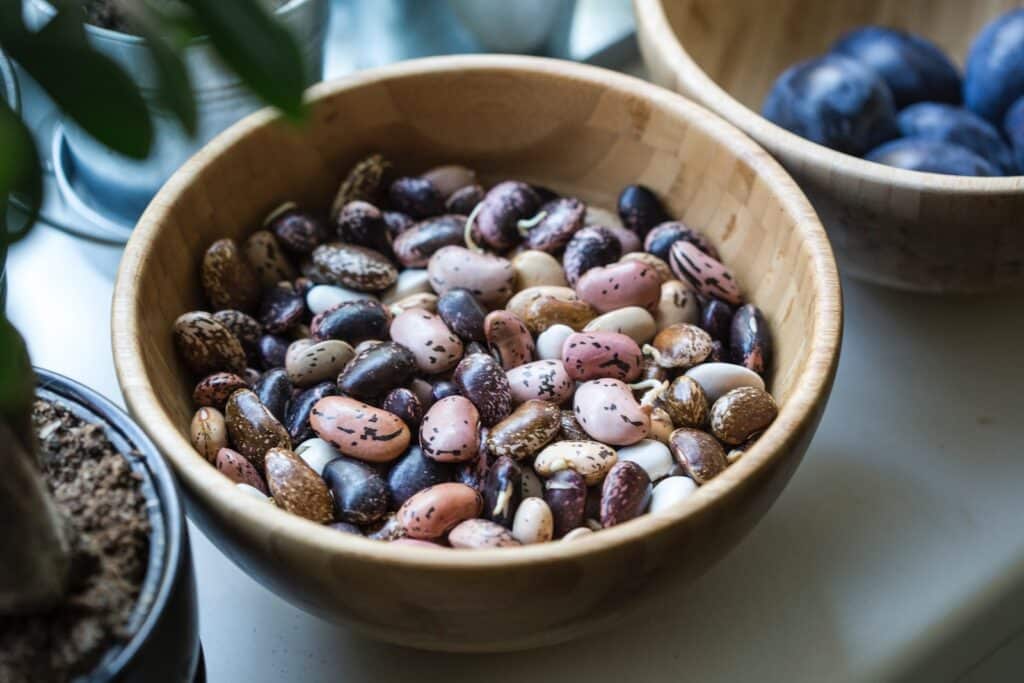
Beans and legumes, which include lentils, chickpeas, black beans, kidney beans, and many others, are known for being nutrient-dense and rich in both protein and fiber. They have long been considered staples in various cuisines around the world due to their nutritional benefits and versatility in dishes. However, when it comes to a strict ketogenic diet, these nutritious foods often find themselves on the exclusion list.
The primary reason for their exclusion from a strict keto diet is their carbohydrate content. The ketogenic diet emphasizes a drastic reduction in carbohydrate intake, typically limiting it to about 20-50 grams of net carbs per day, depending on the individual. Beans and legumes, despite their many health benefits, are relatively high in carbs, which means consuming them can easily cause one to exceed the daily carb limit on a keto diet.
For example, a single cup of cooked lentils has around 40 grams of carbs. Similarly, chickpeas, also known as garbanzo beans, have about 45 grams of carbs per cup when cooked. Given these numbers, it’s easy to see how even a moderate serving of these legumes could take up most, if not all, of one’s daily carb allowance on keto.
Even though the carbs in beans and legumes are mixed with fiber, protein, and healthy plant compounds, the total net carb content is still high enough that it could mess up ketosis, the metabolic state in which the body burns fat for fuel when it does not have enough carbs.
It’s also worth noting that some individuals on less strict or more modified versions of the ketogenic diet might choose to include small portions of beans and legumes occasionally. Still, on a strict keto regimen, they’re typically avoided to ensure staying within the carb limits and maintaining ketosis.
Some Dairy Products

Dairy products are often incorporated into many diets due to their rich nutrient profiles, providing protein, calcium, and other essential nutrients. However, when following the ketogenic diet, not all dairy products are created equal. Here’s a closer look at certain dairy items that can be problematic on a keto regimen.
Milk, Especially Skim Varieties
- Carbohydrate Content: Milk naturally contains a sugar called lactose. A single cup of whole milk can have around 12 grams of carbohydrates, primarily from lactose. This amount might seem manageable, but it can add up quickly if milk is consumed in large quantities or combined with other carb-containing foods.
- Skim vs. Whole: Skim or low-fat milk varieties often contain more carbs than whole milk. When fat is removed from milk, it not only decreases the milk’s fat content but also increases the relative proportion of its carbohydrate content. Furthermore, without the fat, the glycemic impact of the sugar in the milk can be more pronounced.
- Alternatives: For those on a keto diet who still want to enjoy a milk-like texture in their beverages or recipes, alternatives such as unsweetened almond milk, coconut milk, or other low-carb plant-based milks can be suitable.
Some Yogurts That Are High in Sugars
- Flavored and Low-Fat Yogurts: Many commercial yogurts, especially flavored ones, come loaded with added sugars. Even a small serving of flavored yogurt can contain a significant portion of the daily carb limit suitable for keto. Additionally, low-fat or fat-free yogurt varieties often compensate for the reduction in fat by adding more sugar or artificial sweeteners, further increasing the carb content.
- Natural and Greek Yogurts: While plain, full-fat Greek yogurt or natural yogurt has fewer carbs than their flavored counterparts, they still contain the natural sugars from milk. However, the fermentation process reduces some of the lactose content, making them slightly more keto-friendly. Still, portion control is essential.
- Alternatives: For a more keto-compatible option, some people opt for “keto yogurts” made with coconut milk or almond milk, which usually have a lower carb content. Additionally, making homemade yogurt and controlling the fermentation time can further reduce its carb content.
While dairy can be a source of nourishment and pleasure for many, it’s essential for those on a keto diet to be discerning about which dairy products they consume. Reading labels, being aware of serving sizes, and choosing full-fat, unsweetened varieties can help keto dieters navigate the dairy aisle without compromising their dietary goals.
Alcohol

For many, alcohol serves as a social lubricant, a way to relax, or even a culinary pleasure when paired with the right dishes. However, when one is following a ketogenic diet, it’s crucial to understand how different alcoholic beverages can affect ketosis and the body’s metabolism.
Alcohols with Higher Carb Counts to Be Limited
- Beer: Often referred to as “liquid bread,” most regular beers contain a significant amount of carbs, primarily from the grains used in the brewing process. Even light beers, although lower in carbs than their regular counterparts, can still contain enough carbs to disrupt ketosis if consumed in larger quantities.
- Sweet Wines: Dessert wines, ports, and some sherries often have added sugars, making their carb content considerably higher than dry wines.
- Flavored Alcoholic Beverages: Drinks like alcopops, pre-mixed cocktails, or flavored liqueurs (e.g., Baileys, Kahlua) typically contain added sugars, leading to a higher carb count.
- Mixers: While not an alcohol, sugary mixers like regular soda, fruit juices, and tonic water can significantly increase the carb content of an alcoholic drink.
The Metabolic Effects of Alcohol in the Context of Keto
- Immediate Metabolism: When alcohol is consumed, the body prioritizes its metabolism over other macronutrients, including fat. This means that while your body is processing alcohol, the burning of fat is temporarily paused, which could slow down the fat-burning benefits of a keto diet.
- Liver Impact: The liver plays a crucial role in ketosis as it produces ketone bodies. Regular or excessive alcohol consumption can strain the liver, potentially hampering its ability to produce ketones efficiently.
- Lowered Inhibition: Alcohol can reduce inhibitions, which might lead to poor food choices. A person might be more inclined to consume carb-rich foods while drinking or might overeat, both of which can disrupt ketosis.
- Dehydration: Alcohol acts as a diuretic, increasing urine production and potentially leading to dehydration. Given that the initial stages of keto also have a diuretic effect, combining the two can amplify the risk of dehydration and electrolyte imbalances.
Safe(r) Alcohol Choices on Keto
For those who wish to consume alcohol while following a keto diet, opting for the following can be a safer choice:
- Dry Wines: Both white and red dry wines contain fewer carbs than sweet wines. Examples include Pinot Noir, Merlot, and Chardonnay.
- Spirits: Pure spirits like vodka, rum, gin, whiskey, and tequila contain zero carbs, but it’s essential to consume them without sugary mixers. Opting for soda water or having them on the rocks is a better choice.
While it’s possible to enjoy alcohol on a keto diet, moderation is key. Being informed about the carb content of various beverages and being aware of alcohol’s metabolic effects can help individuals make better choices without derailing their keto journey.
Processed Foods
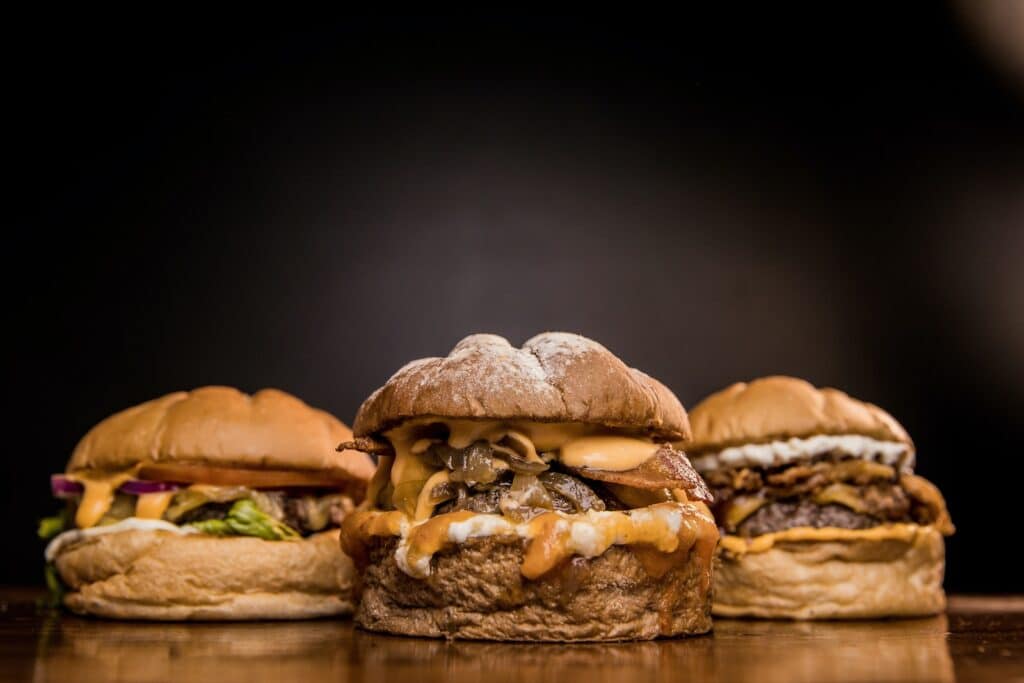
The modern food landscape is dominated by processed foods, which promise convenience, longer shelf life, and often, tantalizing flavors. However, for those on a ketogenic diet, many of these foods present challenges that can hinder progress and health benefits. Let’s delve into why many processed foods are not keto-friendly and how to navigate them.
Why Many Processed Foods Are Unsuitable for Keto
- High Carb Content: A lot of processed foods are made with cheap fillers like corn, wheat, and rice, all of which are high in carbohydrates.
- Unhealthy Fats: While keto is a high-fat diet, not all fats are equal. Many processed foods contain unhealthy trans fats or excessive amounts of omega-6 fatty acids, which can be inflammatory when consumed in large amounts.
- Preservatives and Additives: While not always carb-related, many processed foods contain additives, artificial colors, and preservatives, some of which may have questionable health effects.
Hidden Sugars and Carb Sources in Processed Foods
- Multiple Names for Sugar: Sugar can be listed under various names such as sucrose, glucose, fructose, maltose, dextrose, corn syrup, high fructose corn syrup, and more. This variety can make it challenging to identify unless one is vigilant.
- Starches and Fillers: Ingredients like maltodextrin, cornstarch, and rice flour might not sound sugary but are carbohydrate-dense and can impact ketosis.
- Sugar Alcohols: Some, like erythritol, might be keto-friendly, but others, like maltitol, can affect blood sugar levels.
- “Low-Fat” or “Diet” Labels: Ironically, foods labeled as diet or low-fat often compensate for the lack of fat by adding sugars or other high-carb ingredients.
The Importance of Reading Labels
- Know the Total Carbs: Always check the total carbohydrate content listed on the nutritional facts. Subtracting dietary fiber from the total carbs will give you net carbs, which is often the figure keto dieters are most concerned with.
- Check Ingredients List: Ingredients are listed in order of their quantity in the product. If sugars or high-carb ingredients are listed among the first few, it’s a red flag.
- Beware of Serving Sizes: Manufacturers can sometimes list nutritional info for smaller serving sizes to make the product seem healthier. Always ensure you’re considering the appropriate serving size for your consumption.
- Look for Hidden Sugars: As mentioned, sugar has many names. Familiarizing yourself with these can help in identifying potential keto-unfriendly ingredients.
- Certifications and Claims: While some labels might have claims like “keto-friendly” or “low-carb,” it’s still essential to verify by checking the nutritional facts and ingredient list. Some certifications might not align with your personal carb limit or standard for keto.
In summary, while the convenience of processed foods can be alluring, they often come with pitfalls for those on a keto diet. The key to successfully navigating these challenges is knowledge and vigilance. By understanding what to look for and consistently checking labels, keto dieters can make informed choices that align with their dietary goals.
Fats and Oils to Be Cautious Of
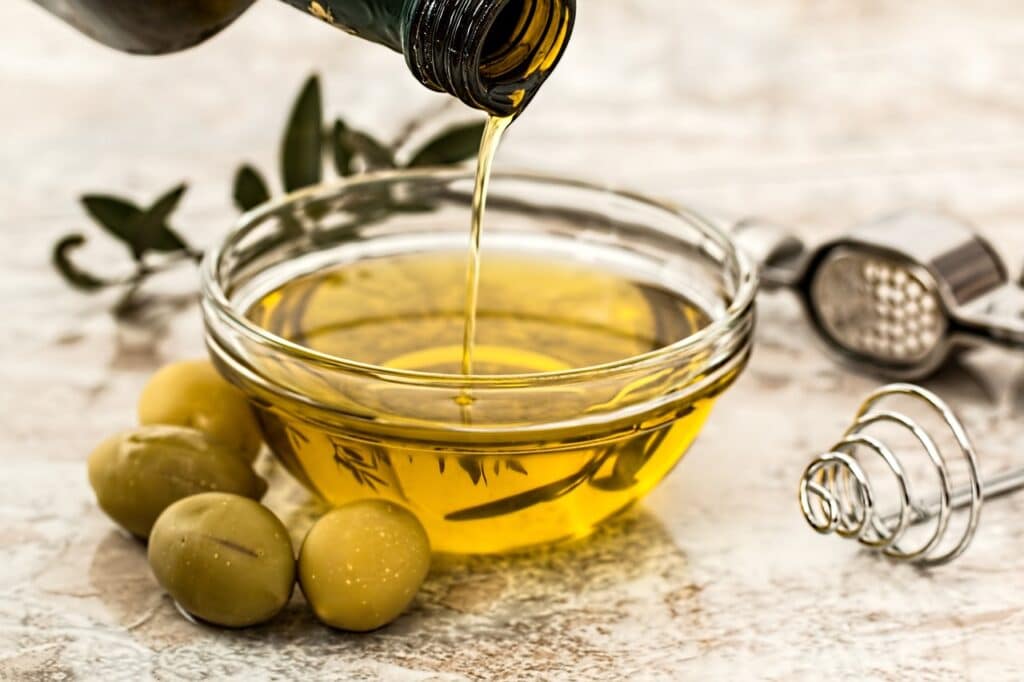
While the ketogenic diet is a high-fat regimen, it’s essential to differentiate between healthy fats that can benefit one’s health and those that might pose risks. Let’s explore the types of fats and oils that those on keto (and, in fact, everyone) should be cautious about consuming.
Unhealthy Trans Fats
- Origin: Trans fats are primarily found in artificially hydrogenated oils. This hydrogenation process turns liquid vegetable oils into solid fats, increasing their shelf life and stability.
- Common Sources: Many processed foods such as margarine, shortening, and some commercial baked goods and snacks contain trans fats.
- Health Risks: Trans fats are known to raise LDL (bad) cholesterol while lowering HDL (good) cholesterol. This double impact makes them particularly detrimental to heart health. They are also associated with increased inflammation and a higher risk of developing heart disease, stroke, and type 2 diabetes.
- Regulations: Due to their associated health risks, many countries have implemented bans or strict regulations on the use of trans fats in commercial food products. Nonetheless, it’s still crucial to check product labels.
Oils High in Omega-6 Fatty Acids
- What Are Omega-6 Fatty Acids? Omega-6s are a type of polyunsaturated fatty acid (PUFA). While they are essential for health in moderation, the typical Western diet tends to include them in excessive amounts, leading to an imbalanced ratio between omega-6 and omega-3 fatty acids.
- Common Sources: Many vegetable oils, such as soybean oil, corn oil, sunflower oil, and safflower oil, are high in omega-6 fatty acids.
- Health Concerns:
- Inflammation: Excessive consumption of omega-6s and an imbalanced omega-6 to omega-3 ratio can contribute to increased inflammation in the body. Chronic inflammation is believed to be a root cause of various diseases, including cardiovascular diseases, arthritis, and some cancers.
- Heart Health: Some studies suggest that while omega-6s can lower LDL cholesterol, they might also lower the beneficial HDL cholesterol and could contribute to endothelial dysfunction.
- Balancing Omega-6 and Omega-3 Intake: For optimal health, it’s crucial to balance the intake of omega-6 and omega-3 fatty acids. Foods rich in omega-3s include fatty fish, flax seeds, chia seeds, and walnuts.
Recommendations
- Prioritize Healthy Fats: Focus on consuming oils and fats that have a balanced fatty acid profile and beneficial health effects, such as extra virgin olive oil, avocados, coconut oil, and fats from grass-fed or pasture-raised animals.
- Limit Processed Foods: Many of the problematic oils and fats come from processed foods. By limiting these and focusing on whole foods, one can naturally reduce the intake of trans fats and excessive omega-6s.
- Read Labels: Always check the ingredient list on food products for hydrogenated oils or sources of excessive omega-6 fatty acids.
In conclusion, while fats are a cornerstone of the ketogenic diet, discernment is key. By being informed and making thoughtful choices, one can reap the benefits of healthy fats and avoid potential health pitfalls.
Conclusion
Venturing into a ketogenic lifestyle is a complex fusion of science, personal biology, and unique choices we make. The foods we opt for or abstain from become cornerstones in shaping our overall health and achieving our dietary aspirations.
Our bodies are unique. While some might react similarly to certain foods, each person’s body has its rhythm and reactions. The guidelines provided are just a stepping stone. The most impactful diet is one that resonates with you and amplifies your well-being. The choices we make about food have repercussions that extend beyond the realm of weight loss or ketosis. They touch upon facets like long-term health, vitality, mental sharpness, and emotional balance.
Today, we’re submerged in a sea of information, and not all of it steers us in the right direction. Hence, it becomes pivotal to have a discerning eye, to be inquisitive, and to continuously educate ourselves. Equipping oneself with knowledge allows for decisions that echo our health goals. Embracing a diet goes beyond merely avoiding specific foods; it’s about grasping the reasons behind those choices. A well-informed individual makes choices that stand the test of time.
Nutrition isn’t a monolithic block that everyone can fit into. Everyone has a unique mold, and what’s transformative for one might be mundane for another. The heart of the matter is to stay attuned to your body, be adaptive, and be amenable to change. While there are fundamental guidelines for the ketogenic diet, the finer points—such as the types of fats you consume, your preferred protein sources, or the vegetables and dairy you include—need a personal touch, tailored to individual preferences, abilities, and health situations.
The power of nutrition is twofold—it can heal, but it can also harm. Diving into substantial dietary shifts, like keto, mandates consultation with healthcare experts. They can guide you, oversee your health progression, and ensure your nutrition journey is both safeguarded and fruitful.
In the grand scheme of health and well-being, dieting transcends mere food consumption. It’s about the quality of life we choose to lead. Through informed decisions, an innate sense of curiosity, and a focus on overall health, every person can carve out a nutritional trail that’s not just goal-oriented but also fulfilling in its voyage.
